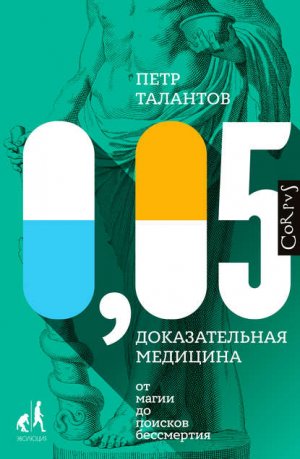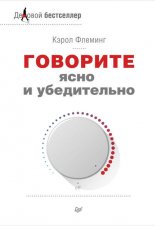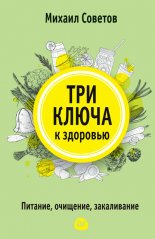0,05. Доказательная медицина от магии до поисков бессмертия Талантов Петр

Prinz F., Schlange T., Asadullah K. Believe it or not: how much can we rely on published data on potential drug targets? // Nature Reviews Drug Discovery. 2011. Vol. 10. № 9. P. 712–713.
Begley C. G. Six red flags for suspect work // Nature. 2013. May 23. Vol. 497. № 7450. P. 433–434.
Begley C. G., Ellis L. M. Raise standards for preclinical cancer research // Nature. 2012. March 29. Vol. 483. P. 531–533.
Plourde G. Validation of surrogate endpoints for clinical trials // Journal of Pharmacology & Clinical Research. 2018. Vol. 5. № 2, 555657.
Васильев А. Н., Ниязов Р. Р., Гавришина Е. В., Драницына М. А., Куличев Д. А. Проблемы планирования и проведения доклинических исследований в Российской Федерации // Ремедиум. 2017. № 9. C. 6–18.
Ganellin R., Roberts S. M., Jefferies R. (eds.) Introduction to biological and small molecule drug research and development, theory and case studies. New York: Academic Press, 2013.
Patnaik A., Kang S. P., Rasco D., Papadopoulos K. P., Elassaiss-Schaap J. et al. Phase I Study of Pembrolizumab (MK-3475; Anti-PD-1 Monoclonal Antibody) in Patients With Advanced Solid Tumors // Clinical Cancer Research. 2015. Vol. 21. № 19. P. 4286–4293.
Wong C. H., Siah K. W., Lo A. W. Estimation of clinical trial success rates and related parameters // Biostatistics. 2018. January.
Lounnas V., Ritschel T., Kelder J., McGuire R., Bywater R. P., Foloppe N. Current progress in Structure-Based Rational Drug Design marks a new mindset in drug discovery // Computational and structural biotechnology journal. 2013. Vol. 5. № 6, e201302011.
Thomas D. W., Burns J., Audette J., Carroll A., Dow-Hygelund C., Hay M. Clinical development success rates 2006–2015. Biotechnology Innovation Organization. 2016. June. P. 8.
Paul S. M., Mytelka D. S., Dunwiddie C. T., Persinger C. C., Munos B. H. et al. How to improve R&D productivity: the pharmaceutical industry’s grand challenge // Nature Reviews Drug Discovery. 2010. March. Vol. 9. № 3. P. 203–214.
Schuhmacher A., Gassmann O., Hinder M. Changing R&D models in research-based pharmaceutical companies // Journal of translational medicine. 2016. Vol. 14. № 1. P. 105.
Arrowsmith J., Miller P. Trial watch: phase II and phase III attrition rates 2011–2012 // Nature reviews Drug discovery. 2013. August. Vol. 12. № 8. P. 569.
Chrisafis A. French drug trial leaves one brain dead and five critically ill // The Guardian. 2016. January 15.
Symons X. Catastrophic result in clinical trial in France // BioEdge. 2016. January17.
Allen F. ‘Like a horror film’. What was the ‘Elephant Man’ drug testing trial, what is TGN1412 and what happened to the men involved? // The Sun. 2017. February.
Attarwala H. TGN1412: From discovery to disaster // Journal of young pharmacists. 2010. July-September. Vol. 2. № 3. P. 332–336.
Tyrsin D., Chuvpilo S., Matskevich A., Nemenov D., Rmer P. S., Tabares P., Hnig T. From TGN1412 to TAB08: the return of CD28 superagonist therapy to clinical development for the treatment of rheumatoid arthritis // Clinical and experimental rheumatology. 2016. July/August. Vol. 34. № 4 (Suppl 98). P. 45–48.
Hnig T. The rise and fall of the CD28 superagonis t TGN1412 and its return as TAB08: a personal account // The FEBS Journal. 2016. Vol. 283. P. 3325–3334.
Frankos V. H. FDA perspectives on the use of teratology data for human risk assessment // Fundamental and Applied Toxicology. 1985. August. Vol. 5. № 4. P. 615–625.
Schardein J. L. Chemically induced birth defects. New York: Marcel Dekker Inc, 1993.
Lumley C., Walker S. (eds.). Animal toxicity studies: their relevance for man. London: Quay, 1990. P. 49–56.
Matthews R. A. J. Medical progress depends on animal models – doesn’t it? // Journal of the Royal Society of Medicine. 2008. February. Vol. 101. № 2. P. 95–98.
Jones C. A., Watson D. J. G., Fone K. C. F. Animal models of schizophrenia // British journal of pharmacology. 2011. October. Vol. 164. № 4. P. 1162–1194.
Stebbings R., Findlay L., Edwards C., Eastwood D., Bird C., North D., Mistry Y.et al. “Cytokine storm” in the phase I trial of monoclonal antibody TGN1412: better understanding the causes to improve preclinical testing of immunotherapeutics // The Journal of Immunology. 2007. Vol. 179. № 5. P. 3325–3331.
Suntharalingam G., Perry M. R., Ward S., Brett S. J., Castello-Cortes A. et al. Cytokine storm in a phase 1 trial of the anti-CD28 monoclonal antibody TGN1412 // The New England Journal of Medicine. 2006. Vol. 355. № 10. P. 1018–1028.
Greek R., Shanks N., Rice M. J. The history and implications of testing thalidomide on animals // The Journal of Philosophy, Science & Law. 2011. October. Vol. 11. № 3. P. 1–32.
Brent R. L. Drug testing in animals for teratogenic effects: Thalidomide in the pregnant rat // The Journal of Pediatrics. 1964. May. Vol. 64. № 5. P. 762–770.
BaileyJ., Knight A., Balcombe J. The future of teratology research is in vitro // Biogenic Amines. 2005. Vol. 19. № 2. P. 97–145.
Nelson-Rees W. A., Daniels D. W., Flandermeyer R. R. Cross-contamination of cells in culture // Science. 1981. April 24. Vol. 212. № 4493. P. 446–452.
Nelson-Rees W. A., Flandermeyer R. R. Inter- and intraspecies contamination of human breast tumor cell lines HBC and BrCa5 and other cell cultures // Science. 1977. March 25. Vol. 195. № 4284. P. 1343–1344.
Lucey B. P., Nelson-Rees W. A., Hutchins G. M. Henrietta Lacks, HeLa cells, and cell culture contamination // The Archives of Pathology & Laboratory Medicine. 2009. Vol. 133. № 9. P. 1463–1467.
Neimark J. Line of attack. Christopher Korch is adding up the costs of contaminated cell lines // Science. 2015. February 27. Vol. 347. № 6225. P. 938–940.
Travis K. For phase I studies, ethical and practical concerns abound // Journal of the National Cancer Institute. 2004. September 15. Vol. 96. № 18. P. 1354–1355.
Romm C. The life of a professional guinea pig // The Atlantic. 2015. September 23.
Lemmens T., Elliott C. Justice for the Professional Guinea Pig // The American Journal of Bioethics. 2001. Vol. 1. № 2. P. 51–53.
Philippidis A. Unlucky 13: top clinical trial failures of 2017 // GEN. 2018. January 3.
Boolell M., Allen M. J., Ballard S. A., Gepi-Attee S., Muirhead G. J. et al. Sildenafil: an orally active type 5 cyclic GMP-specific phosphodiesterase inhibitor for the treatment of penile erectile dysfunction // International Journal of Impotence Research. 1996. June 1. Vol. 8. № 2. P. 47–52.
Couzin-Frankel J. Hope in a mouse // Science. 2014. October 03. Vol. 346. № 6205. P. 28–29.
Benjamin D. J., Berger J. O., Johnson V. E. Redefine statistical significance // Nature Human Behaviour. 2018. Vol. 2. № 1. P. 6–10.
Ioannidis J. P. A. Why most published research findings are false // PLoS Medicine. 2005. August 30. Vol. 2. № 8, e124.
Lakens D., Adolfi F. G., Albers C. J., Anvari F., Apps M. A. et al. Justify Your Alpha // Nature Human Behaviour. 2018. March 1. Vol 2. № 3. P. 168–171.
РубановичА. В. Пересмотр критического уровня значимости (0.005 вместо 0.05): байесовский след // Радиационнаябиология. Радиоэкология. 2018. Т. 58. № 5. C. 453–463.
Head M. L., Holman L., Lanfear R., Kahn A. T., Jennions M. D. The extent and consequences of p-hacking in science // PLoS Biology. 2015. Vol. 13. № 3, e1002106.
Jager L. R., Leek J. T. An estimate of the science-wise false discovery rate and application to the top medical literature // Biostatistics. 2014. January 1. Vol. 15. № 1. P. 1–12.
Геппе Н. А., Фарбер И. М., Озерская И. В., Малявина У. С., Малышев В. С., Бухаров Д. Г. Использование препарата Коризалия у детей с острым инфекционным и персистирующим аллергическим ринитом // Доктор. Ру. 2017. № 4 (133). С. 54–60.
Petrov A., Perekhvatova N., Skulachev M., Stein L., Ousler G. SkQ1 ophthalmic solution for dry eye treatment: results of a phase 2 safety and efficacy clinical study in the environment and during challenge in the controlled adverse environment model // Advances in therapy. 2016. Vol. 33. № 1. P. 96–115.
Clinical trials often unregistered, unpublished // JAMA. 2017. September 11.
Chopra S. S. Industry funding of clinical trials: benefit or bias? // JAMA. 2003. Vol. 290. № 1. P. 113–114.
Als-Nielsen B., Chen W., Gluud C., Kjaergard L. L. Association of funding and conclusions in randomized drug trials: a reflection of treatment effect or adverse events? // JAMA. 2003. August 20. Vol. 290. № 7. P. 921–928.
Lundh A., Lexchin J., Mintzes B., Schroll J. B., Bero L. Industry sponsorship and research outcome // Cochrane Systematic Review – Methodology. 2017. February 16.
Ioannidis J. P. A. Why most clinical research is not useful // PLoS Medicine. 2016. June 21. Vol. 13. № 6, e1002049.
Macleod M. R., Michie S., Roberts I., Dirnagl U., Chalmers I., Ioannidis J. P A. et al. Biomedical research: increasing value, reducing waste // Lancet. 2014. January 11. Vol. 383. № 9912. P. 101–104.
Ioannidis J. P. A., Greenland S., Hlatky M. A., Khoury M. J, Macleod M. R. et al. Increasing value and reducing waste in research design, conduct, and analysis // Lancet. 2014. January 11. Vol. 383. № 9912. P. 166–175.
Ioannidis J. P. A. Perfect study, poor evidence: interpretation of biases preceding study design // Seminars in hematology. 2008. July. Vol. 45. P. 160–166.
Jefferson T., Doshi P. Multisystem failure: the story of anti-influenza drugs // BMJ. 2014. April. Vol. 348, g2263.
Abramson J. D., Rosenberg H. G., Jewell N., Wright J. M. Should people at low risk of cardiovascular disease take a statin? // BMJ. 2013. Vol. 347, f6123.
Ioannidis J. P. A. Contradicted and initially stronger effects in highly cited clinical research // JAMA. 2005. July. Vol. 294. № 2. P. 218–228.
Djulbegovic B., Loughran T. P., Hornung C. A., Kloecker G., Efthimiadis E. N. et al. The quality of medical evidence in hematology-oncology // The American journal of medicine. 1999. February. Vol. 106. P. 198–205.
Isaakidis P., Swingler G. H., Pienaar E., Volmink J., Ioannidis J. P. Relation between burden of disease and randomised evidence in sub-Saharan Africa: survey of research // BMJ. 2002. March. Vol. 324. P. 702.
Swingler G. H., Pillay V., Pienaar E. D., Ioannidis J. P. International collaboration, funding and association with burden of disease in randomized controlled trials in Africa // Bulletin of the World Health Organization. 2005. July. Vol. 83. P. 511–517.
Goldberg N. H., Schneeweiss S., Kowal M. K., Gagne J. J. Availability of Comparative Efficacy Data at the Time of Drug Approval in the United States // JAMA. 2011. May. Vol. 305. № 17. P. 1786–1789.
Van Luijn J. C., Van Loenen A. C., Gribnau F. W., Leufkens H. G. Choice of comparator in active control trials of new drugs // Annals of Pharmacotherapy. 2008. November. Vol. 42. № 11. P. 1605–1612.
Safer. D. J. Design and reporting modifications in industry-sponsored comparative psychopharmacology trials // The Journal of nervous and mental disease. 2002. September. Vol. 190. №. 9. P. 583–592.
Lapierre Y. D., Nair N. P., Chouinard G., Awad A. G., Saxena B., Jones B. et al. A controlled dose-ranging study of remoxipride and haloperidol in schizophrenia – a Canadian multicentre trial // Acta psychiatrica Scandinavica. 1990. April. Vol. 82. P. 72–77.
Patris M., Agussol P., Alby J. M., Brion S., Burnat G., Castelnau D. et al. A double-blind multicentre comparison of remoxipride, at two dose levels, and haloperidol // Acta psychiatrica Scandinavica. 1990. April. Vol. 82. P. 78–82.
Ioannidis J. P. A. More than a billion people taking statins? Potential implications of the new cardiovascular guidelines // JAMA. 2014. February 5. Vol. 311. № 5. Р. 463–464.
Pandor A., Ara R. M., Tumur I., Wilkinson A. J., Paisley S., Duenas A. et al. Ezetimibe monotherapy for cholesterol lowering in 2,722 people: systematic review and meta-analysis of randomized controlled trials // Journal of internal medicine. 2009. May. Vol. 265. № 5. P. 568–580.
Doggrell S. A. The ezetimibe controversy – can this be resolved by comparing the clinical trials with simvastatin and ezetimibe alone and together? // Expert opinion on pharmacotherapy. 2012. July. Vol. 13. № 10. P. 1469–1480.
Brown B. G., Taylor A. J. Does ENHANCE diminish confidence in lowering LDL or in ezetimibe? // The New England journal of Medicine. 2008. April 3. Vol. 358. P. 1504–1507.
Naci H., Ioannidis J. P. A. How good is “evidence” from clinical studies of drug effects and why might such evidence fail in the prediction of the clinical utility of drugs? // Annual review of pharmacology and toxicology. 2015. Vol. 55. P. 169–189.
Cohen D. Rosiglitazone: what went wrong? // BMJ. 2010. September. Vol. 341, c4848.
Harris G. Diabetes drug maker hid test data, files indicate // The New York Times. 2010. July 3.
Fleming T. R., Powers J. H. Biomarkers and surrogate endpoints in clinical trials // Statistics in medicine. 2012. November 10. Vol. 31. № 25. P. 2973–2984.
Svensson S., Menkes D. B., Lexchin J. Surrogate outcomes in clinical trials: a cautionary tale // JAMA. 2013. Vol. 173. № 8. P. 611–612.
Fleming T. R., DeMets D. L. Surrogate end points in clinical trials: are we being misled? // Annals of Internal Medicine. 1996. October 1. Vol. 125. № 7. P. 605–613.
Gtzsche P. C., Liberati A., Torri V., Rossetti L. Beware of Surrogate Outcome Measures // International journal of technology assessment in health care. 1996. Vol. 12. № 2. P. 238–246.
Hewlett S., De Wit M., Richards P., Quest E., Hughes R., Heiberg T., Kirwan J. Patients and professionals as research partners: Challenges, practicalities and benefits // Arthritis & Rheumatism. 2006. August 15. Vol. 55. № 4. P. 676–680.
Hewlett S., Cockshott Z., Byron M., Kitchen K., Tipler S., Pope D., Hehir M. Patients’ perceptions of fatigue in rheumatoid arthritis: overwhelming, uncontrollable, ignored // Arthritis & Rheumatism. 2005. October. Vol. 53. P. 697–702.
Hewlett S., Carr M., Ryan S., Kirwan J., Richards P., Carr A., Hughes R. Outcomes generated by patients with rheumatoid arthritis: how important are they? // Musculoskeletal care. 2005. Vol. 3. P. 131–142.
Rao J. K., Weinberger M., Kroenke K. Visit-specific expectations and patient-centered outcomes: a literature review // Archives of family medicine. 2000. November. Vol. 9. № 10. P. 1148–1155.
Sherine E. G., Sharon-Lise T. N. Getting the methods right – The foundation of patient-centered outcomes research // The New England journal of medicine. 2012. August. Vol. 367. № 9. P. 787790.
Podolanczuk A. J., Lederer D. J. Patient-centered outcomes in idiopathic pulmonary fibrosis clinical trials // American Journal of Respiratory and Critical Care Medicine. 2017. September 15. Vol. 196. № 6. P. 674–675.
Lassere M. N., Johnson K. R., Boers M., Tugwell P., Brooks P., Simon L., Strand V. et al. Definitions and validation criteria for biomarkers and surrogate endpoints: development and testing of a quantitative hierarchical levels of evidence schema // The Journal of rheumatology. 2007. March. Vol. 34. № 3. P. 607–615.
Hunter D. J., Losina E., Guermazi A., Burstein D., Lassere M. N., Kraus V. A pathway and approach to biomarker validation and qualification for osteoarthritis clinical trials // Current drug targets. 2010. May. Vol. 11. № 5. P. 536–545.
Chan A.-W., Hrbjartsson A., Haahr M. T. et al. Empirical evidence for selective reporting of outcomes in randomized trials: comparison of protocols to published articles // JAMA. 2004. May 26. Vol. 291. № 20. P. 2457–2465.
Lee K. L., McNeer J. F., Starmer C. F., Harris P. J., Rosati R. A. Clinical judgment and statistics. Lessons from a simulated randomized trial in coronary artery disease // Circulation. 1980. March. Vol. 61. № 3. P. 508–515.
Rothwell P. M. Treating individuals 2. Subgroup analysis in randomised controlled trials: importance, indications, and interpretation // Lancet. 2005. January. Vol. 365. P. 176–186.
Stallones R. A. The use and abuse of subgroup analysis in epidemiological research // Preventive medicine. 1987. March. Vol. 16. № 2. P. 183–194.
Oxman A. D., Guyatt G. H. A Consumer’s guide to subgroup analyses // Annals of internal medicine. 1992. January. Vol. 116. № 1. P. 78–84.
Sterne J. A. C., Smith G. D. Sifting the evidence – what’s wrong with significance tests? // Physical Therapy. 2001. August 1. Vol. 81. № 8. P. 1464–1469.
Guyatt G., Jaeschke R., Heddle N., Cook D., Shannon H., Walter S. Basic statistics for clinicians: 2. Interpreting study results: confidence intervals // Canadian Medical Association journal. 1995. January. Vol. 152. № 2. P. 169–173.
Kriinen I., Sipponen P., Siurala M. What fraction of hospital ulcer patients is eligible for prospective drug trials? // Scandinavian journal of gastroenterology. 1991. Vol. 26. № 186. P. 73–76.
Charlson M. E., Horwitz R. I. Applying results of randomised trials to clinical practice: impact of losses before randomisation // British medical journal. 1984. November 10. Vol. 289. P. 1281–1284.
Simpson S. H., Eurich D. T., Majumdar S. R., Padwal R. S., Tsuyuki R. T. et al. A meta-analysis of the association between adherence to drug therapy and mortality // BMJ. 2006. July 1. Vol. 333. № 7557.
Mitchell J. “But will it help my patients with myocardial infarction?” The implications of recent trials for everyday country folk // British Medical Journal. 1982. October 23. Vol. 285. P. 1140–1148.
Shepherd J. Statins for primary prevention: strategic options to save lives and money // Journal of the Royal Society of Medicine. 2004. February. Vol. 97. № 2. P. 66–71.
Asymptomatic Carotid Atherosclerosis Study Group. Carotid endarterectomy for patients with asymptomatic internal carotid artery stenosis // JAMA. 1995. Vol. 273. P. 1421–1428.
Moore W. S., Young B., Baker W. H. et al. Surgical results: a justification of the surgeon selection process for the ACAS trial // Journal of Vascular Surgery. 1996. Vol. 23. P. 323–328.
Bond R., Rerkasem K., Rothwell P. M. High morbidity due to endarterectomy for asymptomatic carotid stenosis // Cerebrovascular diseases. 2003. Vol. 16.
Vesper I. Europe’s academics fail to report results for 90% of clinical trials // Nature. 2018. September 13.
Plint A. C., Moher D., Morrison A., Schulz K., Altman D. G., Hill C., Gaboury I. Does the CONSORT checklist improve the quality of reports of randomised controlled trials? A systematic review // The Medical journal of Australia. 2006. September. Vol. 185. № 5. P. 263–267.
Rothstein H. R., Sutton A. J., Borenstein M. (eds). Publication Bias in Meta-analysis.
West Sussex, England: Wiley, 2005.
Tong C. H., Tong L.-I., Tong J. E. The Vioxx recall case and comments // Competitiveness Review. Vol. 19. № 2. P. 114–118.
Psaty B. M., Kronmal R. A. Reporting mortality findings in trials of rofecoxib for Alzheimer disease or cognitive impairment: a case study based on documents from rofecoxib litigation // JAMA. 2008. Vol. 299. № 15. P. 1813–1817.
Topol E. J. Failing the public health – rofecoxib, Merck, and the FDA // The New England journal of Medicine. 2004. October 21. Vol. 351. P. 1707–1709.
Berenson A. Evidence in Vioxx suits shows intervention by Merck officials // The New York Times. 2005. April 24.
Curfman G. D., Morrissey S., Drazen J. M. Expression of concern: Bombardier et al., “Comparison of upper gastrointestinal toxicity of rofecoxib and naproxen in patients with rheumatoid arthritis” // New England Journal of Medicine. 2000. Vol. 343. P. 1520–1528.
Egilman D. S., Presler A. H. Report of specific cardiovascular outcomes of the ADVANTAGE trial // Annals of internal medicine. 2006. May 16. Vol. 144. № 10. P. 781.
Nelson L. D. False-positives, p-hacking, statistical power, and evidential value. University of California, Berkeley, Haas School of Business, Summer Institute. 2014.
Dickersin K. How important is publication bias? A synthesis of available data // AIDS education and prevention. 1997. Vol. 9. P. 15–21.
Turner E. H., Matthews A. M., Linardatos E., Tell R. A., Rosenthal R. Selective publication of antidepressant. Trials and its influence on apparent efficacy // New England Journal of Medicine. 2008. Vol. 358. № 3. P. 252–260.
Rising K., Bacchetti P., Bero L. Reporting bias in drug trials submitted to the Food and Drug Administration: review of publication and presentation // Plos Medicine. 2008. November 25. Vol. 5. № 11, e217.
Scharf O., Colevas A. D. Adverse event reporting in publications compared with sponsor database for cancer clinical trials // Journal of clinical oncology. 2006. August 20. Vol. 24. № 24. P. 3933–3938.
MacLean C. H., Morton S. C., Ofman J. J., Roth E. A., Shekelle P. G. How useful are unpublished data from the Food and Drug Administration in meta-analysis? // Journal of clinical epidemiology. 2003. Vol. 56. P. 44–51.
Chan A.-W., Krlea-Jeri K., Schmid I., Altman D. G. Outcome reporting bias in randomized trials funded by the Canadian Institutes of Health Research // CMAJ. 2004. September 28. Vol. 171. № 7. P. 735–740.
Dwan K., Altman D. G., Arnaiz J. A., Bloom J., Chan A.-W., Cronin E. et al. Systematic Review of the Empirical Evidence of Study Publication Bias and Outcome Reporting Bias // PLOS One. 2008. August 28. Vol. 3. № 8, e3081.
Lee K. P., Boyd E. A., Holroyd-Leduc J. M., Bacchetti P., Bero L. A. Predictors of publication: characteristics of submitted manuscripts associated with acceptance at major biomedical journals // The Medical journal of Australia. 2006. June 19. Vol. 184. № 12. P. 621–626.
Ioannidis J., Lau J. Evolution of treatment effects over time: Empirical insight from recursive cumulative metaanalyses // PNAS. 2001. January 30. Vol. 98. № 3. P. 831–836.
Ross J. S., Mulvey G. K., Hines E. M., Nissen S. E., Krumholz H. M. Trial publication after registration in clinical trials. Gov: a cross-sectional analysis // Plos Medicine. 2009. September 8. Vol. 6. № 9, e1000144.
Drazen J. M., Wood A. J. J. Trial Registration Report Card // The New England journal of medicine. 2005. December 29. Vol. 353. P. 2809–2811.
Ioannidis J. P. A., Trikalins T. A. Early extreme contradictory estimates may appear in published research: The Proteus phenomenon in molecular genetics researchand randomized trials // Journal of clinical epidemiology. 2005. Vol. 58. P. 543–549.
Ioannidis J. P. Effect of the statistical significance of results on the time to completion and publication of randomized efficacy trials // JAMA. 1998. Vol. 279. № 4. P. 281–286.
Bekelman J. E., Li Y., Gross C. P. Scope and impact of financial conflicts of interest in biomedical research: a systematic review // JAMA. 2003. January 22–29. Vol. 289. № 4. P. 454–465.
Bhandari M., Busse J. W., Jackowski D., Montori V. M., Schnemann H. et al. Association between industry funding and statistically significant pro-industry findings in medical and surgical randomized trials // CMAJ. 2004. February 17. Vol. 170. № 4. P. 477–480.
Chalmers I. The true lorcainide story revealed // BMJ. 2015. Vol. 350, g7717
Cowley A. J., Skene A., Stainer K., Hampton J. R. The effect of lorcainide on arrhythmias and survival in patients with acute myocardial infarction: an example of publication bias // International journal of cardiology. 1993. July 1. Vol. 40. № 2. P. 161–166.
De Angelis C., Drazen J. M., Frizelle F. A., Haug C., Hoey J., Horton R. et al. Clinical trial registration: a statement from the International Committee of Medical Journal Editors // The New England journal of medicine. 2004. September 16. Vol. 351. P. 1250–1251.
Barroso C. Epistemology of medical knowledge / Seising R., Tabacchi M. (eds). Fuzziness and medicine: philosophical reflections and application systems in health care. Studies in fuzziness and soft computing. Vol. 302. Springer, Berlin, Heidelberg, 2013.
Eddy D. M. Evidence-based medicine: a unified approach // Health Affairs. 2005. Vol. 24. № 1. P. 9–17.
Claridge J. A., Fabian T. C. History and development of evidence-based medicine // World Journal of Surgery. 2005. Vol. 29. № 5. P. 547–553.
Van Baalen S. The epistemology of clinical decision-making: an epistemological analysis of reasoning in clinical practice, and the role of technological measurements. Master thesis. University of twente, 2014.
Goodman K. W. Ethics and evidence-based medicine. Fallibility and responsibility in clinical science. Cambridge University Press, 2002.
Glasziou P., Chalmers I., Rawlings M., McCulloch P. When are randomised trials unnecessary? Picking signal from noise // BMJ. 2007. Vol. 334. № 7589. P. 349–351.
Worrall J. Why There’s no cause to randomize // The British Journal for the Philosophy of Science. 2007. Vol. 58. № 3. P. 451–488.
Counsell C. E., Clarke M. J., Slattery J. et al. The miracle of DICE therapy for acute stroke: fact or fictional product of subgroup analysis? // BMJ. 1994. Vol. 309. P. 1677–1681.
Konstam M. A., Weir M. R., Reicin A., Shapiro D., Sperling R. S., Barr E., Gertz B. J. Cardiovascular thrombotic events in controlled, clinical trials of rofecoxib // Circulation. 2001. November 6. Vol. 104. № 19. P. 2280–2288.
De Leon J. Evidence-based medicine versus personalized medicine: are they enemies? // Journal of Clinical Psychopharmacology. 2012. April. Vol. 32. № 2. P. 153–164.
Ioannidis J. P. The mass production of redundant, misleading, and conflicted systematic reviews and meta-analyses // The Milbank quarterly. 2016. September. Vol. 94. № 3. P. 485–514.
Samet J. M. Epidemiology and the tobacco epidemic: how research on tobacco and health shaped epidemiology // American Journal of Epidemiology. 2016. March 1. Vol. 183. № 5. P. 394–402.
Cochrane A. Sickness in Salonica: my first, worst, and most successful clinical trial // British Medical Journal. 1984. December. Vol. 289. P. 1726–1727.
Simpson G. G. The therapiste and the researcher // Science. 1967. October 13. Vol. 158. № 3798. P. 246.
Cochrane A. L. Effectiveness and efficiency. London: Nuffield Provincial Hospitals Trust, 1972.
Stavrou A., Challoumas D., Dimitrakakis G. Archibald Cochrane (1909–1988): the father of evidence-based medicine // Interactive cardiovascular and thoracic surgery. 2014. January. Vol. 18. № 1. P. 121–124.
Barron A. B., Maleszka R., Helliwell P. G., Robinson G. E. Effects of cocaine on honey bee dance behaviour // The Journal of Experimental Biology. 2009. Vol. 212. P. 163–168.
Chan K. A clinical trial gone awry: the Chocolate Happiness Undergoing More Pleasantness (CHUMP) study // Canadian Medical Association journal. 2007. December 4. Vol. 177. № 12. P. 1539–1541.
Schwartz M. A. The importance of stupidity in scientific research // Journal of cell science. 2008. June 1. Vol. 121. № 11. P. 1771.
Shafik A. Effect of different types of textiles on sexual activity. Experimental study // European urology. 1993. Vol. 24. № 3. P. 375–380.
Crowley P., Chalmers I., Keirse M. J. N. The effects of corticosteroid administration before preterm delivery: an overview of the evidence from controlled trials // British Journal of Obstetrics & Gynaecology. 1990. January. Vol. 97. № 1. P. 11–25.
Olson M. V. Precision medicine at the crossroads // Human genomics. 2017. Vol. 11. P. 23.
Windsor B., Popovich I., Jordan V., Showell M., Shea B., Farquhar C. Methodological quality of systematic reviews in subfertility: a comparison of Cochrane and non-Cochrane systematic reviews in assisted reproductive technologies // Human reproduction. 2012. December. Vol. 27. № 12. P. 3460–3466.
Fleming P. S., Seehra J., Polychronopoulou A., Fedorowicz Z., Pandis N. Cochrane and non-Cochrane systematic reviews in leading orthodontic journals: a quality paradigm? // The European Journal of Orthodontics. 2013. April. Vol. 35. № 2. P. 244–248.
Moseley A. M., Elkins M. R., Herbert R. D., Maher C. G., Sherrington C. Cochrane reviews used more rigorous methods than non-Cochrane reviews: survey of systematic reviews in physiotherapy // Journal of clinical epidemiology. 2009. October. Vol. 62. № 10. P. 1021–1030.
Olsen O., Middleton P., Ezzo J. et al. Quality of Cochrane reviews: assessment of sample from 1998 // BMJ. 2001. October. Vol. 323. № 7317. P. 829–832.
Clarke M., Chalmers I. Discussion sections in reports of controlled trials published in general medical journals // JAMA. 1998. Vol. 280. № 3. P. 280–282.
Clarke M., Hopewell S., Chalmers I. Reports of clinical trials should begin and end with up-to-date systematic reviews of other relevant evidence: a status report // Journal of the Royal Society of Medicine. 2007. April. Vol. 100. P. 187–190.
Fergusson D., Glass K. C., Hutton B., Shapiro S. Randomized controlled trials of aprotinin in cardiac surgery: could clinical equipoise have stopped the bleeding? // Clinical Trials. 2005. June 1. Vol. 2. № 3. P. 218–232.
LeLorier J., Grgoire G., Benhaddad A., Lapierre J., Derderian F. Discrepancies between meta-analyses and subsequent large randomized, controlled trials // The New England Journal of Medicine. 1997. August 21. Vol. 337. № 8. P. 536–542.
Amanullah S., Venkataraman R. The routine use of albumin for fluid resuscitation of critically ill patients is not warranted // Critical Care. 2004. December. Vol. 8. № 6.
Sauerland S., Maegele M. A CRASH landing in severe head injury // Lancet. 2004. October 9. Vol. 364. № 9442. P. 1291–1292.
Mirza R. D., Punja S., Vohra S., Guyatt G. The history and development of N of 1 trials // Journal of the Royal Society of Medicine. 2017. Vol. 110. № 8. P. 330–340.
Ioannidis J. P. A., Khoury M. J. Evidence-based medicine and big genomic data // Human Molecular Genetics. 2018. May 1. Vol. 27. № R 1. P. R2–7.
Lillie E. O., Patay ., Diamant J., Issell B., Topol E. J., Schork N. J. The n-of-1 clinical trial: the ultimate strategy for individualizing medicine? // Personalized medicine. 2011. March. Vol. 8. № 2. P. 161–173.
Moore A., Derry S., Eccleston C., Kalso E. Expect analgesic failure; pursue analgesic success // BMJ. 2013. Vol. 346. № 7911, f2690.
Wegman A., Van der Windt D. A., De Haan M., Deville W., Fo C., de Vries T. P. Switching from NSAIDs to paracetamol: a series of n of 1 trials for individual patients with osteoarthritis // Annals of the rheumatic diseases. 2003. December. Vol. 62. № 12. P. 1156–1161.
Mahon J. L., Laupacis A., Hodder R. V., McKim D. A., Paterson N. A., Wood T. E. et al. Theophylline for irreversible chronic airflow limitation: a randomized study comparing n of 1 trials to standard practice // Chest. 1999. January. Vol. 115. № 1. P. 38–48.
Pope J. E., Prashker M., Anderson J. The efficacy and cost effectiveness of N of 1 studies with diclofenac compared to standard treatment with nonsteroidal antiinflammatory drugs in osteoarthritis // The Journal of Rheumatology. 2004. January. Vol. 31. № 1. P. 140–149.
Ledford H. Cancer-genome study challenges mouse “avatars” // Nature. 2017. October 9.
Lai Y., Wei X., Lin S., Qin L., Cheng L., Li P. Current status and perspectives of patient-derived xenograft models in cancer research // Journal of Hematology & Oncology. 2017. Vol. 10. P. 106.
Ferriss J. S., Rice L. W. The role of in vitro directed chemotherapy in epithelial ovarian cancer // Reviews in obstetrics & gynecology. 2010. Spring. Vol. 3. № 2. P. 49–54.
Burstein H. J., Mangu P. B., Somerfield M. R., Schrag D., Samson D., Holt L. et al. American Society of Clinical Oncology clinical practice guideline update on the use of chemotherapy sensitivity and resistance assays // Journal of clinical oncology. 2011. August 20. Vol. 29. № 24. P. 3328–3330.
Gebelhoff R. Sequencing the genome creates so much data we don’t know what to do with it // The Washington Post. 2015. July 7.
Goetz M. P., Kamal A., Ames M. M. Tamoxifen pharmacogenomics: the role of CYP2D6 as a predictor of drug response // Clinical pharmacology and therapeutics. 2008. January. Vol. 83. № 1. P. 160–166.
Rubin R. Precision medicine: the future or simply politics? // JAMA. 2015. Vol. 313. № 11. P. 1089–1091.
Часть шестая
Lindsay G. B., Merrill R. M., Hedin R. J. The contribution of public health and improved social conditions to increased life expectancy: an analysis of public awareness // Journal of Community Medicine and Health Education. 2014. Vol. 4. P. 311.
Ten great public health Achievements – United States, 1900–1999 // MMWR. 1999. April 2. Vol. 48. № 12. P. 241–243.
Bunker J. P., Frazier H. S., Mosteller F. Improving health: measuring effects of medical care // The Milbank quarterly. 1994. Vol. 72. № 2. P. 225–258.
McKinley J. B., McKinley S. M. The questionable contribution of medical measures to the decline of mortality in the United States in the twentieth century // The Milbank Memorial Fund quarterly. Health and society. 1977. Summer. Vol. 55. № 3. P. 405–428.
Bunker J. P. The role of medical care in contributing to health improvements within societies // International Journal of Epidemiology. 2001. December 1. Vol. 30. № 6. P. 1260–1263.
Murray C. J. L. Why is Japanese life expectancy so high? // Lancet. 2011. September 24. Vol. 378. № 9797. P. 1124–1125.
Shiro Horiuchi Major causes of the rapid longevity extension in postwar Japan // The Japanese Journal of Population. 2011. March. Vol. 9. № 1. P. 162–171.
Crimmins E. M., Preston S. H., Cohen B. (eds) Explaining divergent levels of longevity in high-income countries. Washington (DC): National Academies Press (US), 2011.
Marmot M. G. Status syndrome: A challenge to medicine // JAMA. 2006. Vol. 295. № 11. P. 1304–1307.
Marmot M. The status syndrome: How social standing affects our health and longevity. New York, NY: Henry Holt and Company, 2004.
Marmot M. G., Rose G., Shipley M., Hamilton P. J. S. Employment grade and coronary heart disease in British civil servants // Journal of epidemiology and community health. 1978. Vol. 32. № 4. P. 244–249.
Adler N., Ostrove J. Socioeconomic status and health: what we know and what we don’t /Adler N., Marmot M., McEwen B., Stewart J. (eds.) Socioeconomic status and health in industrial nations. New York, NY: New York Academy of Sciences, 1999. P. 3–15.
Mackenbach J. P., Bos V., Andersen O. et al. Widening socioeconomic inequalities in mortality in six Western European countries // International Journal of Epidemiology. 2003. Vol. 32. P. 830–837.
McDonough P., Duncan G. J., Williams D., House J. S. Income dynamics and adult mortality in the United States, 1972 through 1989 // The American Journal of Public Health. 1997. Vol. 87. № 9. P. 1476–1483.
Britton A., Shipley M., Marmot M., Hemingway H. Does access to cardiac investigation and treatment contribute to social and ethnic differences in coronary heart disease? Whitehall II prospective cohort study // BMJ. 2004. Vol. 329. № 7461. P. 318–323.
Closing the gap in a generation: health equity through action on the social determinants of health. Final Report of the Commission on Social Determinants of Health. Geneva, World Health Organization, 2008.
Franco ., lvarez-Dardet C., Ruiz M. T. Effect of democracy on health: ecological study // BMJ. 2004. December 18. Vol. 329. № 7480. P. 1421–1423.
Johanson R., Newburn M., Macfarlane A. Has the medicalisation of childbirth gone too far? // BMJ. 2002. Vol. 324. № 7342. P. 892–895.
Kaunitz A. M., Spence C., Danielson T. S., Rochat R. W., Grimes D. A. Perinatal and maternal mortality in a religious group avoiding obstetric care // American Journal of Obstetrics & Gynecology. 1984. December 1. Vol. 150. № 7. P. 826–831.
Stamatakis E., Weiler R., Ioannidis J. P. Undue industry influences that distort healthcare research, strategy, expenditure and practice: a review // European journal of clinical investigation. 2013. Vol. 43. № 5. P. 469–475.
Moynihan R., Doran E., Henry D. Disease mongering is now part of the global health debate // PLoS Medicine. 2008. Vol. 5. № 5, e106.
Simons J. The $ 10 Billion Pill Hold the fries, please. Lipitor, the cholesterol-lowering drug, has become the bestselling pharmaceutical in history. Here’s how Pfizer did it // Fortune. 2003. January 20. Vol. 147. № 1. P. 58–62.
Лечение ОРВИ и гриппа в рутинной клинической практике // Фармацевтический вестник. 2017. 28 июля.
Мизерницкий Ю. Л. Применение инновационного отечественного индуктора интерферона для профилактики и лечения острых респираторных вирусных инфекций у детей // Медицинский совет. 2016. № 1. С. 50–53.






